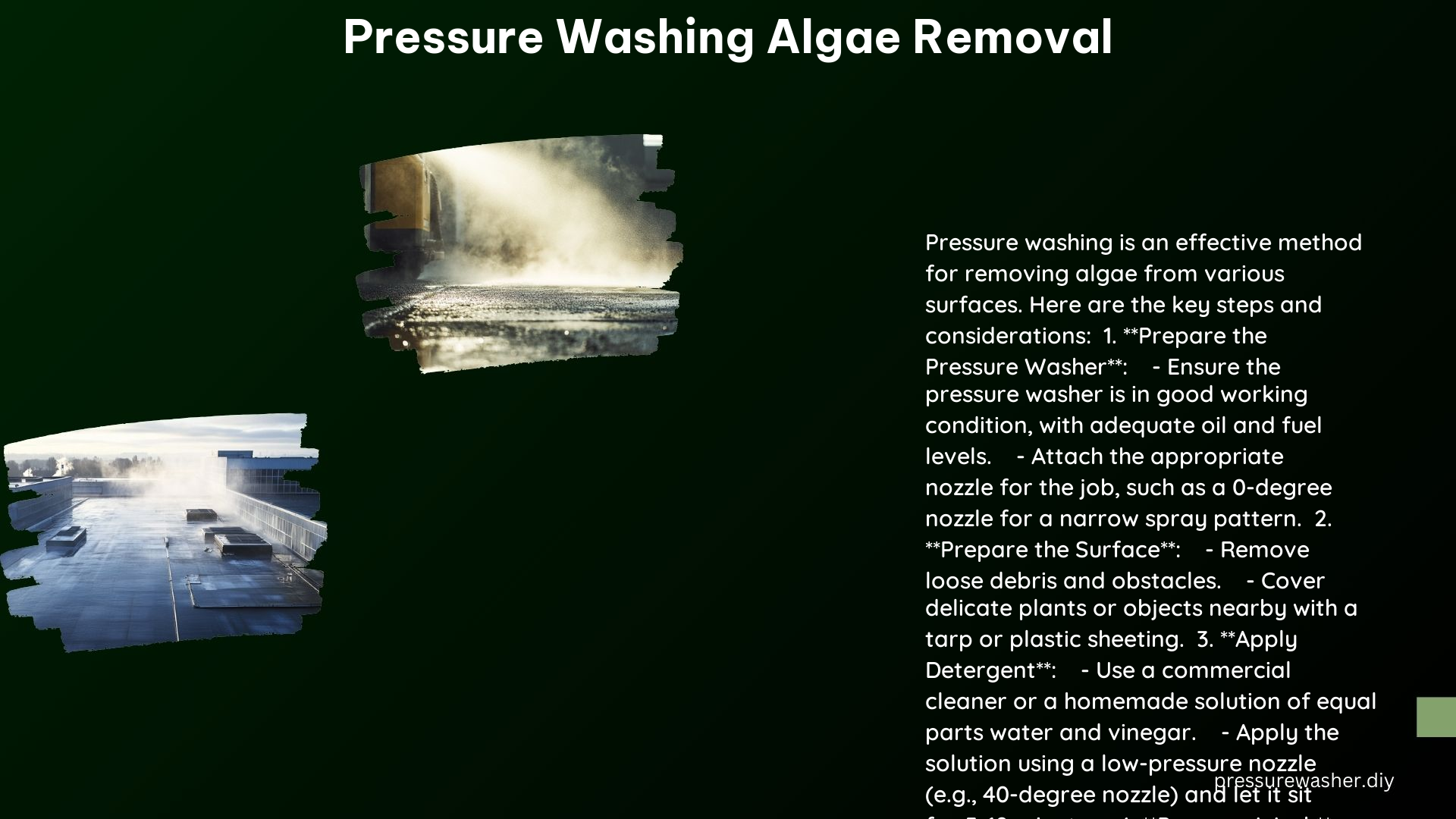Pressure washing is a highly effective method for removing unsightly algae from various surfaces, including siding, concrete, and even indoor spaces. This comprehensive guide delves into the technical specifications, specialized cleaning solutions, and step-by-step procedures to ensure a successful algae removal project.
Effective Methods for Removing Algae from Siding
Prepare the Surface
Before pressure washing, it’s crucial to thoroughly inspect the surface and remove any loose debris or obstacles. This includes sweeping away leaves, twigs, and other materials that could interfere with the cleaning process. Additionally, it’s essential to cover delicate plants or objects nearby with a tarp or plastic sheeting to protect them from the high-pressure stream.
Apply Detergent
Applying a cleaning solution to the surface before pressure washing can significantly enhance the effectiveness of the algae removal process. Use a commercial cleaner specifically designed for algae and moss removal, or create a DIY solution by mixing equal parts water and white vinegar. Allow the solution to sit on the surface for 5-10 minutes, giving it time to penetrate and loosen the algae.
Pressure Wash
When pressure washing, hold the spray gun approximately 6 inches away from the surface and work in a sweeping motion, moving back and forth across the surface in even strokes. It’s crucial to avoid holding the spray gun too close to the surface, as this can damage the material. Start at the top of the surface and work your way down, ensuring complete coverage.
Rinse
After pressure washing, thoroughly rinse the surface with a low-pressure nozzle to remove any remaining cleaning solution and dislodged algae. This step is essential to ensure a clean, streak-free finish.
Using Pressure Washers for Indoor Surfaces

Basement Ceilings
Pressure washers can be an effective tool for removing algae from basement ceilings, but it’s essential to exercise caution to avoid damaging the ceiling material. Use a low-pressure setting (around 1,000-1,500 psi) and a wide-angle nozzle (40-degree) to gently clean the surface without causing any harm.
Wood Flooring
Pressure washing can also be used to clean wood flooring, but it’s crucial to use a low-pressure setting (around 1,000-1,500 psi) and a wide-angle nozzle (40-degree) to avoid damaging the wood. Additionally, use a cleaning solution specifically designed for wood surfaces to ensure the best results.
Specialized Cleaning Solutions and Chemicals
Bleach
Bleach can be used to remove algae, but it’s not always the best option as it can damage certain surfaces. If using bleach, dilute it with water and test it on a small, inconspicuous area first to ensure it doesn’t cause any discoloration or deterioration.
Wet & Forget
Wet & Forget is a specialized product designed to remove algae and moss growth. It’s applied to the surface and takes several weeks to kill the algae. While effective, it’s important to use Wet & Forget with caution, as it can be toxic. Always follow the manufacturer’s instructions carefully.
Commercial Cleaners
There are various commercial cleaners available that are specifically formulated to remove algae and moss from different surfaces. These products often contain a combination of surfactants, biocides, and other active ingredients to effectively break down and eliminate the algae. Always follow the manufacturer’s instructions and test the cleaner on a small area first to ensure compatibility with the surface.
Technical Specifications
Pressure Washer Nozzle
The type of nozzle used on the pressure washer can significantly impact the effectiveness of the algae removal process. For removing green deposits, use a nozzle with a narrow spray pattern, such as a 0-degree nozzle. For rinsing and cleaning larger areas, a wide-angle nozzle (40-degree) is more suitable.
Pressure Setting
The pressure setting on the pressure washer should be adjusted based on the surface material. Use a low-pressure setting (around 1,000-2,000 psi) for cleaning delicate surfaces like wood, and a higher pressure setting (around 2,500-3,000 psi) for more robust surfaces like concrete.
Distance from Surface
Maintaining the proper distance from the surface is crucial to avoid damaging the material. Hold the spray gun approximately 6 inches away from the surface during the pressure washing process.
Additional Tips
Regular Maintenance
Regularly cleaning and sealing surfaces can help prevent the growth of algae and other unwanted organisms. This proactive approach can save time and effort in the long run.
Sealing
After pressure washing and removing the algae, consider applying a sealant to the surface to inhibit future algae growth. This can help maintain the clean, refreshed appearance of the surface.
Safety Precautions
When using a pressure washer, always wear appropriate personal protective equipment (PPE), including gloves, safety glasses, and a mask. Ensure the work area is well-ventilated, and avoid using pressure washers near open water sources to prevent potential environmental contamination.
By following these comprehensive guidelines and technical specifications, you can effectively remove algae from a variety of surfaces using pressure washing techniques. Remember to always prioritize safety, test cleaning solutions on small areas, and consider regular maintenance to keep your surfaces looking their best.
